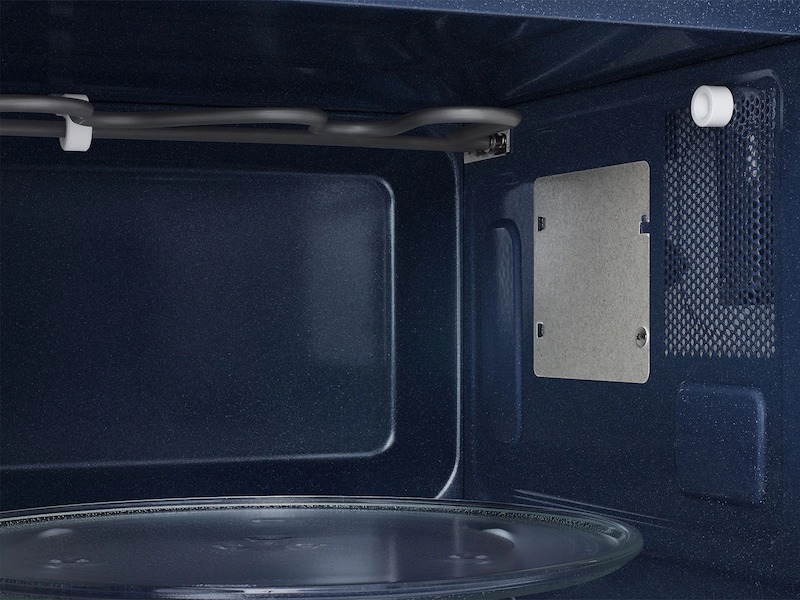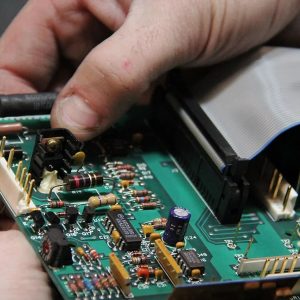In modern kitchens, the microwave oven has become a must-have. It contributes a huge ton of convenience and efficiency to the kitchen when it comes to cooking and reheating food. But, just as with every other cooking appliance, you can be faced with repair problems from time to time. These issues can turn out to be very frustrating when you are someone who relies on your microwave for day-to-day kitchen activities. Maintaining and repairing it therefore becomes of necessity.
In this blog, we will discuss the top 10 common microwave oven heating problems and proffer solutions as well. We picked the most common so that hopefully, you’ll locate the problem with your microwave oven here. And then we proffer you the best possible solutions.
Before we dive straight into the chunk of this blog, it’s noteworthy to understand that while some microwave ovens are easy to troubleshoot and fix, some can be a real bummer. For such difficult situations, always prioritize your safety and reach out to a trained microwave oven technician.
Can we begin?
Top 10 Microwave Oven Heating Issues and How to Fix Them
Your microwave oven is susceptible to a vast range of problems that can affect its functionality and tempt you to leave it on the fritz. Let’s explore the top 10 and hopefully, we can get your microwave oven working again.
1. Microwave Not Heating Food
One of the most common yet frustrating and tiring problems you can experience with your microwave oven is when it refuses to heat your food. There are several reasons behind this. Some of those could include faulty magnetron, high voltage diode, or malfunctioning capacitor.
Solution
-
- To be sure of what the problem really is, start by checking the microwave’s power supply. Make sure it is securely plugged in.
-
- If the power supply is working just fine, but the microwave oven itself isn’t still heating, then it’s best to consult an experienced microwave technician. Dealing with such an issue as a novice could be dangerous. This is due to the high voltage involved.
-
- An experienced technician, after inspecting the microwave components, can perform necessary repairs and get your microwave in working shape like nothing ever went wrong.
2. Microwave Starts then Stops
This particular problem can be very frustrating. Because your microwave will actually start. But will go off in no time. It usually indicates a problem with the control board or electrical wiring.
Solution
-
- Try to reset the control panel by unplugging the microwave for a few minutes and then plugging it back in.
-
- If it persists after the first try, then please seek professional help. An experienced technician can diagnose the specific issues and replace any faulty component of the microwave oven safely and efficiently.
3. Microwave Runs but Doesn’t Heat
Does your microwave seem to be running smoothly but unable to heat your food? This may be due to a malfunctioning magnetron which is responsible for generating heat. One other possible cause could be a faulty high-voltage diode or capacitor.
Solution
-
- When dealing with this kind of problem, it’s important to exercise caution. This is because those components may carry high voltage even when the microwave isn’t connected to any power source.
-
- For this kind of issue, it’s best to consult professionals as it can escalate to an accident if you try to fix yourself. Professionals have the knowledge, expertise, and tools to diagnose and repair the problem no matter how complex it may be.
4. Microwave Heats Unevenly
When your microwave heats unevenly, it may lead to undercooked or overcooked food. This usually occurs when your oven door is faulty. It could keep some aspects of the oven burning at a safe temperature while some other parts are unsafe. Or the heat isn’t reaching all ends of the microwave. It could even be a slight issue with the door, like a problem with the door seal or a slight misalignment.
Solution
-
- Check the door seal for any damage or wear and tear.
-
- If you notice any wear or tear on the seal, replace it for proper heat retention.
-
- Make sure the turntable is properly aligned and functioning correctly.
-
- If none of these works, you can reach out to a professional repair service like STAR Repair Appliance. They specialize in repairing specific brands of microwaves (be it Samsung, Whirlpool, LG, Frigidaire, Maytag, GE, Kitchenaid, Bosch, or any other brands) and can fix varying complexities of microwave oven problems.
5. Microwave Plate Not Spinning

The turntables are responsible for the spinning of the plate inside the microwave oven. If they’re not rotating anymore, then you’ll have an issue ensuring your food is evenly heated. If the turntables aren’t functioning, then it’s most likely possible that the turntable motor has gotten on the fritz.
Solution
- Be sure that nothing is obstructing the turntable movement. If you notice any kind of obstruction (even if it’s as minute as dust), make sure you clear the path for the rotation.
- If there are none, it’s more likely that the motor that is responsible for the rotational movement has gone bad. You should get it replaced.
6. Sparks Inside Microwave
Are you noticing sparks inside your microwave? This could be potentially dangerous as it can lead to fire hazards. You may be noticing those sparks because of the presence of metal objects inside the microwave, such as foils or utensils. It’s best to remove every metal object from the oven before putting it on to prevent damage to the microwave oven or injury to you. If there are no metal objects present and you are still noticing those sparks, then a component or two inside the microwave oven may be malfunctioning, such as the latch not securing properly.
Solution
- These kinds of issues could easily escalate. The best thing to do is to disconnect the microwave oven from the power source and then reach out to professionals.
8. Microwave Making Unusual Noises
Unusual noises coming from your microwave can indicate a problem with the motor or other internal components. These noises can range from grinding or buzzing sounds to loud banging or rattling. If you notice any unusual noises, it’s best to consult a professional repair service. They can diagnose the cause of the noise and perform any necessary repairs or replacements. It’s important to address these issues promptly to prevent further damage to the microwave and ensure that it continues to operate smoothly. By entrusting your microwave repair to experts who specialize in major appliances, you can have peace of mind knowing that your appliance is in capable hands.
9. Display Panel Not Working
A malfunctioning display panel on your microwave can make it difficult to operate and adjust settings. This issue can be caused by various factors, including electrical issues or a faulty control panel.
Solution
- Try resetting the microwave by unplugging it for a few minutes and then plugging it back in.
- If the display panel still doesn’t work, it may require repair or replacement.
- It’s best to consult a professional repair service that specializes in display repair and troubleshooting electrical issues. They can diagnose the specific problem and provide the necessary solutions to ensure your microwave’s display panel functions properly, allowing you to easily control and monitor cooking settings.
10. Microwave Light Bulb Not Working
The oven light bulb inside your microwave not only provides visibility but also indicates when the microwave is in use. If the light bulb is not working, it may simply need to be replaced. Refer to the microwave’s user manual or consult a professional technician to determine the correct replacement bulb and safely replace it. If your home has fuses instead of circuit breakers, make sure that the fuses are tightened securely and replace any that have blown. If they are not blown, unscrew the fuses that supply the oven, wait 30 seconds, and then screw them back in. STAR Appliance Repair can provide the necessary guidance and assistance to ensure a seamless bulb replacement process.
Signs You Need to Call an Expert

While DIY fixes can solve some microwave oven heating problems, certain signs indicate the need to call an expert for repair. Here are some signs to watch out for:
- Costly breakdowns: If your microwave oven constantly requires repairs or if the cost of repairs is becoming expensive, it may be more cost-effective to call a professional technician for advice on fixing or getting a new unit.
- Years of experience: Professional repair services have years of experience working with various microwave oven brands and models. Their expertise allows them to diagnose and fix complex heating problems efficiently.
- Warranty and Guarantee: Professional repair services often offer warranties and guarantees for their work, providing peace of mind that the issue will be resolved properly.
- Safety concerns: If you have any safety concerns, such as strange odors, unusual noises, or sparking within the microwave oven, it is important to call a professional technician immediately to avoid any potential hazards.
Conclusion
If you are facing any of the common microwave oven heating issues, don’t fret. With proper troubleshooting and maintenance tips, you can address these problems effectively. From basic fixes you can do at home to knowing when it’s time to call a professional, this guide equips you with the knowledge to resolve most heating concerns. Remember, safety first when dealing with electrical appliances. For personalized assistance or if the problem persists, don’t hesitate to get in touch with a professional to ensure your microwave is working efficiently and safely.
STAR Appliance Repair is your go-to option, we fix both electric ovens and gas ovens. Our oven repair specialist can extend the life of your appliance. We can handle all your kitchen appliances (wall oven, stove repair, dishwasher, dryer, washer, burner, and other appliances) at a comfortable rate. We service all of Orange County, CA, and Riverside County, CA. Contact us to schedule service online now.
Frequently Asked Questions
If your microwave oven is not heating food, it could be due to a faulty magnetron, high voltage diode, or malfunctioning capacitor. First, ensure that the microwave is securely plugged in and the power supply is working. If the issue persists, consult a professional technician as dealing with high voltage components can be dangerous.
A microwave oven that starts and then stops may have problems with its control board or electrical wiring. Try resetting the control panel by unplugging the microwave for a few minutes and then plugging it back in. If the problem continues, seek professional help to diagnose and fix the issue
If your microwave oven runs but doesn’t heat, it is likely due to a malfunctioning magnetron or a faulty high-voltage diode or capacitor. Since these components can carry high voltage, it’s best to consult a technician for safe and accurate repairs.
Uneven heating in a microwave oven can result from a faulty door seal or misalignment of the turntable. Check the door seal for any damage and ensure the turntable is properly aligned. If these steps don’t resolve the issue, contact a professional repair service for further assistance.
If the microwave oven plate is not spinning, check for any obstructions that might be blocking the turntable. If there are no obstructions, the issue may be with the turntable motor, which may need to be replaced.
